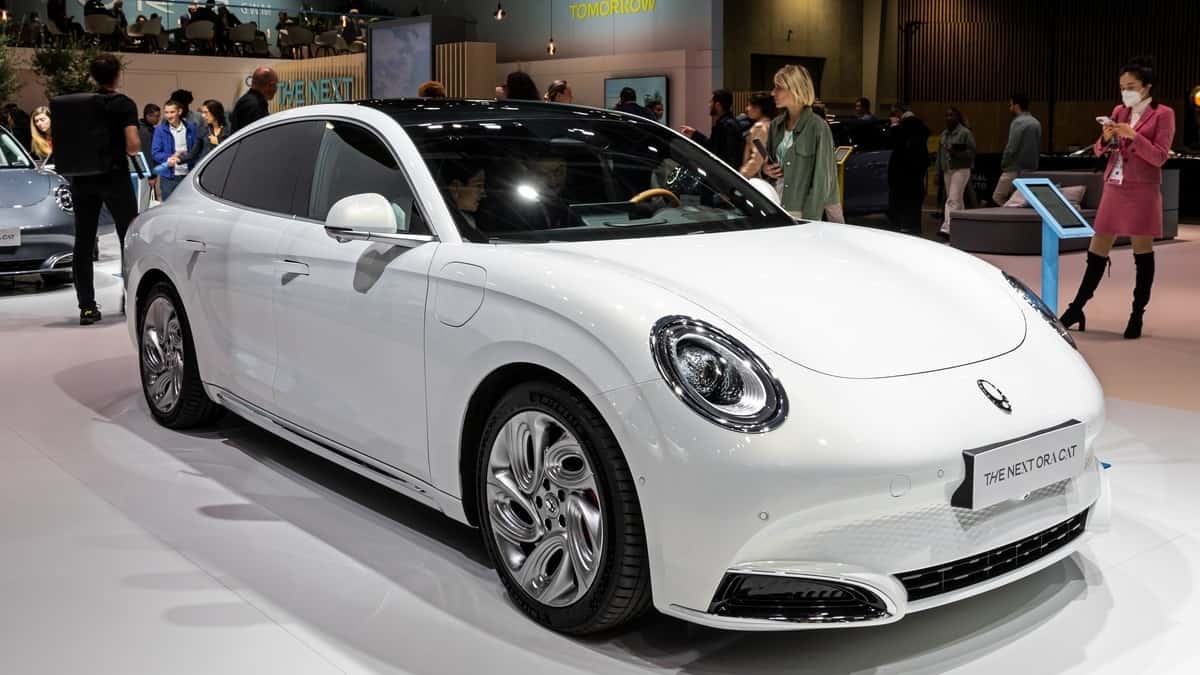Governments worldwide have been promoting the switch to electric vehicles as a crucial part of their strategies to hit their net-zero emission targets. However, the EVs’ prices often discourage potential buyers, as they are significantly more expensive than their gas counterparts.
Notably, that is the case in Australia. Drive noted that the country has no access to cheap EVs. That said, the auto news platform provided data on the cheapest EVs in several key markets worldwide, with Australian-converted prices for comparison.
Cheapest EVs with their key specs and prices in each market
| Markets | Cheapest EV | Market Price | Price in AUD | Power | Battery | Range |
| Australia | GWM Ora | AUD43,990 | 43,990 | 126kW | 48kWh | 310km |
| New Zealand | MG ZS EV | $NZ49,990 | 45,600 | 130kW | 50.3kWh | 320km |
| USA | Nissan Leaf | USD28,040 | 40,580 | 110kW | 40kWh | 240km |
| UK | Citroen Ami | £7695 | 14,000 | 6 kW | 5.5kWh | 70km |
| Europe | Dacia Spring | €20,800 | 32,300 | 33kW | 26.8kWh | 230km |
| Japan | Nissan Sakura | ¥2,399,100 | 25,800 | 47kW | 20kWh | 180km |
| China | Wuling Hongguang Mini EV | ¥32,800 | 7000 | 15kW | 9.2kWh | 120km |
| India | MG ZS EV | ₹2.258m | 40,200 | 130kW | 50.3kWh | 320km |
| Indonesia | Wuling Air | IDR238m | 22,500 | 30kW | 17.3kWh | 200km |
| Germany | Volkswagen e-Up | €29,995 | 46,500 | 40kW | 32.3kWh | 256km |
| Thailand | Volt City EV microcar | THB325,000 | 14,000 | – | 11.8 kWh | 165km |
| South Africa | Mini Cooper SE | R723k | 59,150 | 135 kW | 32.6 kWh | 183km |
In Australia, the GWM Ora hatchback is currently the cheapest electric car. It has a base price of $43,990. Notably, this amount excludes the on-road costs. Depending on your location, it can price up to $47,891 on the road. The EV is equipped with a single motor and 48kWh battery that enables 126kW power and 310km range. Notably, Australia’s pricing is much cheaper than UK’s, which starts at £30,495 ($AU52,800) for the Ora.
In New Zealand, the cheapest EV is the MG ZS EV, with a price of $NZ49,990 ($45,600). It has a 50.3kWh battery which offers a power of 130kW and a range of 320km.
In the United States, the Nissan Leaf has taken the first spot for the cheapest EV as of now. Its base price is $US28,040 ($40,580), offering a 40kWh battery. The EV boasts a power of 110kW and a range of 240km.
In the UK, the Citroen Ami is the most affordable EV, costing £7695 ($AU14,000). It boasts a 45km/h maximum speed and a 70km range. It is equipped with a 5.5kWh battery.
In Europe, the cheapest EV is the Dacia Spring, which costs €20,800 ($AU32,300). It is equipped with a 26.8kWh battery that enables a 230km range. However, it only offers an electric motor of 33kW.
In Japan, the Nissan Sakura is currently the most affordable EV for ¥2,399,100 ($AU25,800). Nissan offers two trim variations for this model, with both of them having a 20kWh battery. It boasts a power of 47kW and a battery of 20kWh, enabling a range of 180km.
In China, the cheapest is the Wuling Hongguang Mini EV, which costs ¥32,800 ($AU7000). It is undoubtedly “cheap,” but it only has small 12-inch wheels. Its battery is also only 9.2kWh and has a power of 15kW.
In India, the MG ZS EV is also the cheapest, like in New Zealand. It costs ₹22.58m ($AU40,200) before on-road expenses. It is equipped with a 50.3kWh battery and a motor of 130kW, enabling a range of 320km.
In Indonesia, the most affordable electric car is currently the Wuling Air for IDR 238m ($AU22,500). It has a 200km range, driven by a 30kW power and 17.3kWh battery.
Germany, Thailand, and South Africa are other remarkable markets with the cheapest electric car models.
In Germany, the cheapest EV is the Volkswagen e-Up, which costs €29,995 ($AU46,500). Meanwhile, the Volt City EV microcar gets the top spot in the cheapest EV ranking with a price of THB 325,000 ($AU14,000). As for South Africa’s bet, the Mini Cooper SE is currently the most affordable EV for R723k ($AU59,150).
For most of the cheapest EVs in other markets, the scale is primarily why these models cannot be as cheap in Australia. For instance, Nissan recorded sales of 12,026 Leaf models in the US last year, while it only sold 331 in Australia. The report noted that the US market has ten times Australia’s population and 36 times as many car buyers. Notably, the case is similar to China.

